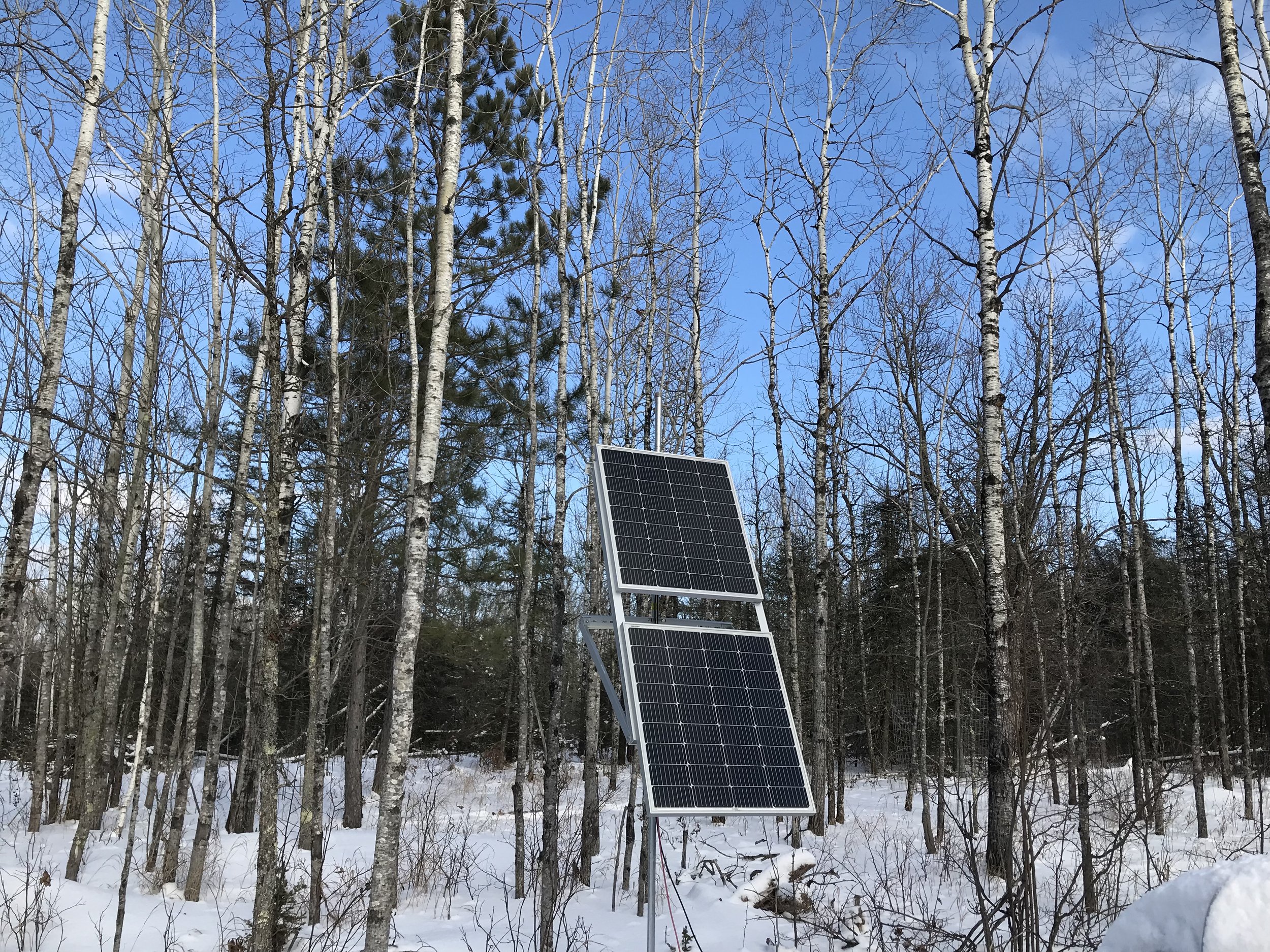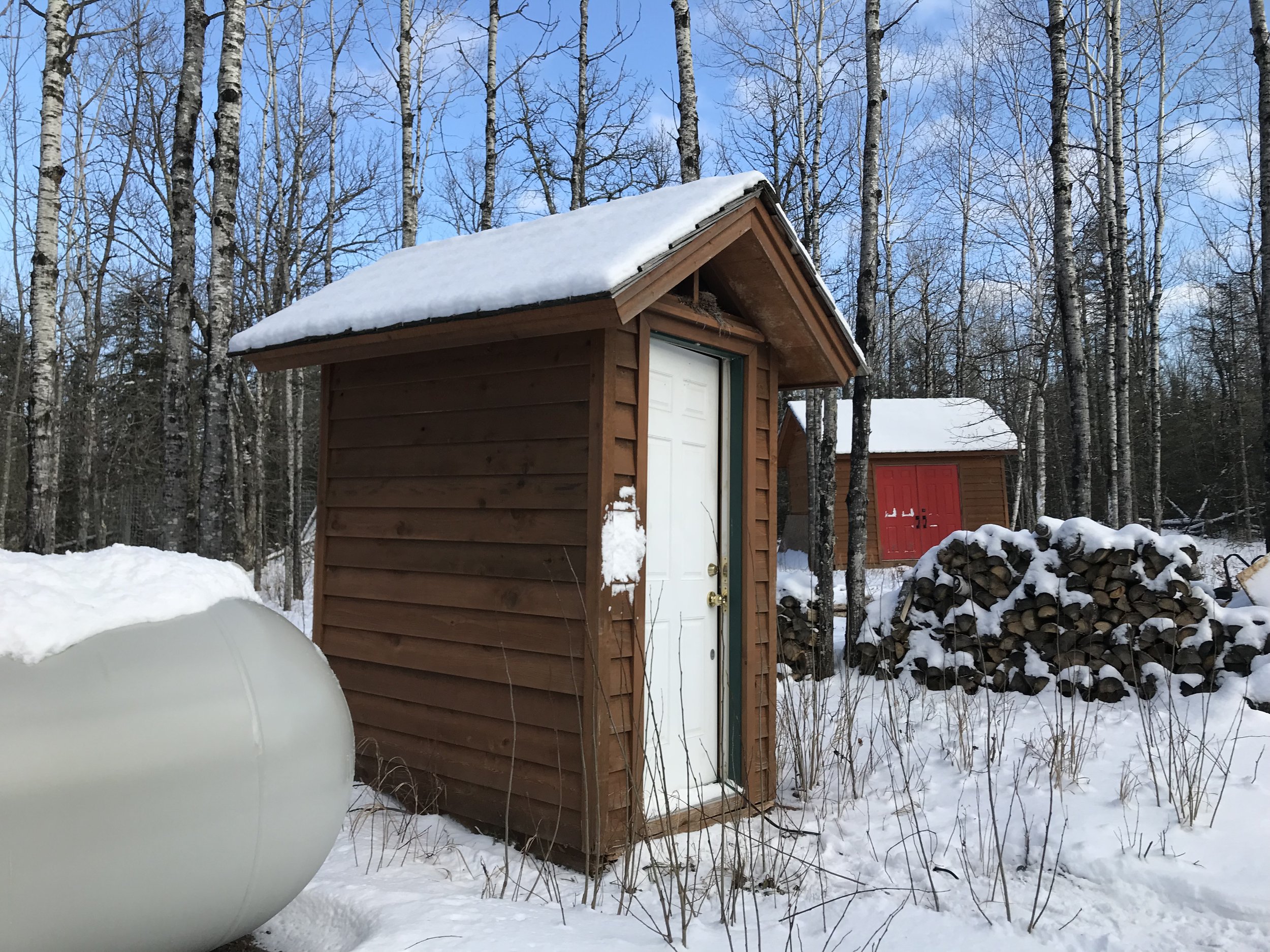A few things you should know about Riverwood Hideaway…
Solar Panels / Battery Charging:
In the winter, if snow builds up on the solar panels, you can GENTLY brush it off with a broom. Anytime there are consecutive cloudy days, we may need to stop over and run the generator (backup) to charge the batteries. Just let us know if power is not coming on.
Water System:
A battery operated spigot runs water from a 4 gallon jug into the sink. Because we do not have a closed system, this water is NOT for drinking. It is meant for hand and dish washing only. The waste water needs to be monitored and dumped out in the woods as far from the cabin as possible to keep animals from approaching the house.
River Access:
The best way to step down into the Knife River is by following the trail to the right past the cedar swing and then down the bank where it is less steep than other locations on the bank. Only do so (always with caution) when it is not a strong current or in winter after it is completely frozen. You can step in if you go to the left as well. There is a “beachy” area but also tall grasses along the bank. Always be aware of nettles, which have large serrated leaves and a pink flower that looks similar to milkweed. If you have sensitive skin, these can cause some irritation if touched.
Items in the shed:
There is backup propane for the gas grill and charcoal for the small one. There is also a large garbage can for overflow garbage in the shed, lounge chairs for sky viewing and some yard games for your use.
Small generator building and shed (with red doors) in background
Wilderness WISDOM
It’s a good idea (especially during full foliage) to stay on our mowed trails as there could be nettles along the river (which can cause a rash on your skin) or bee nests in downed logs or dead trees. Over time we will be continuing to work with local river and forestry restoration groups to eliminate the dead and invasive trees and plant young Pines, Birch and Cedar.
About the Steelhead Trout in Knife River… You will need a fishing license and can take only authorized fish.
Some info from GREAT LAKES DRIVE website:
The Knife River has the North Shore’s only naturalized wild steelhead trout population and is the only tributary with no natural barriers preventing fish migration. The water clarity does vary from the many tributaries, but much of the bank has been open to access for fly fishing near Old Hwy 61. Pacific Natives Steelhead.
Steelhead are a variety of rainbow trout (Oncorhynchus mykiss). Native to the Pacific Northwest, they spawn in rivers from northern California to Alaska. Although in their native range they can exceed 20 pounds, Lake Superior’s steelhead rarely surpass 10 pounds.
Minnesota’s steelhead have existed as a largely self-sustaining population in Lake Superior since first being stocked in 1895. The U.S. Fish Commission brought steelhead here from the McCloud River in northern California. Steelhead were raised to fry stage at the federal fish hatchery, which still stands at the mouth of the Lester River in Duluth, and about 100,000 fry were stocked in Isle Royale’s Washington Harbor. This was the first stocking anywhere of steelhead outside of their native range, and it was a success. Steelhead managed to thrive in Lake Superior.
Much like salmon, steelhead spawn in rivers. In Minnesota their offspring normally spend two years in rivers before exiting at a stage called smolt. Minnesota tributaries to Lake Superior provide marginal steelhead habitat, because the rivers are prone to dramatic fluctuations in temperature and water levels, and because so many of the streams have natural barrier falls that block upstream migration to the best spawning and nursery habitat. Of Minnesota’s tributaries, only the Knife and Blackhoof rivers offer miles of spawning habitat. Still, for many years the species prospered, and a popular steelhead fishery peaked in the 1960s and ’70s before experiencing a deep decline.
Looking Closely
It is incredible what you might see if you look closely around the cabin and river. We discovered an amazing caterpillar that looked exactly like a chunk of lichen - similar to that which grows on the Oak Trees. There are Snowshoe Hares, Ruffed Grouse, Ravens, Eagles, Coyotes and many other creatures inhabiting the forest.
trout you might see in the knife river






